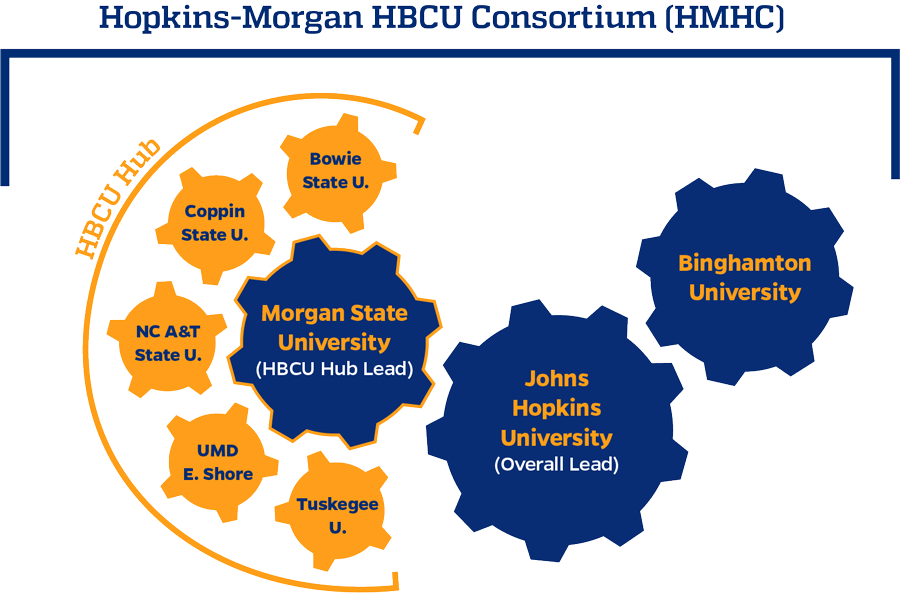The Hopkins-Morgan HBCU Consortium (HMHC) is a consortium of eight universities led by Johns Hopkins University (JHU), working together on research projects with the National Institute of Standards and Technologies (NIST) Gaithersburg, Maryland campus through NIST’s Professional Research Experience Program (PREP). The consortium, previously known as the Hopkins NIST PREP Consortium (HNPC), comprises its three original universities—Johns Hopkins University (consortium lead), Morgan State University, and Binghamton University—as well as five newly added and eagerly welcomed colleges —Bowie State University, Coppin State University, North Carolina Agricultural & Technical State University, Tuskegee University, and University of Maryland Eastern Shore. For more information about each university, visit the Consortium page.
Larry Nagahara, Vice Dean for Research and Translation at JHU’s Whiting School of Engineering (WSE), is the PI for this effort and was supported in the proposal process by WSE’s Office of Research and Translation (OR&T). Funded by an award of up to $81 million, HMHC will be led by JHU WSE under Nagahara, with Morgan State University acting as sub-lead for the five new colleges. For more information about the HBCU hub, including its active opportunities, visit Morgan State University’s HMHC page.



 The National Institute of Standards and Technology (NIST) was created in 1901 to improve the domestic measurement infrastructure that lagged behind the capabilities of the United Kingdom, Germany, and other economic rivals at the time. It has since become the foundational source of technology, measurement, and standards for many of the products and services the United States relies on, including the smart electric power grid, atomic clocks, and computer chips. The Gaithersburg, Maryland campus has served as NIST’s headquarters since 1961. It sprawls over 578 acres and houses several facilities, including the National Fire Research Laboratory; the Net-Zero Energy Residential Test Facility; and the expansive NIST Advanced Measurement Laboratory Complex, which is home to the Center for Nanoscale Science and Technology.
The National Institute of Standards and Technology (NIST) was created in 1901 to improve the domestic measurement infrastructure that lagged behind the capabilities of the United Kingdom, Germany, and other economic rivals at the time. It has since become the foundational source of technology, measurement, and standards for many of the products and services the United States relies on, including the smart electric power grid, atomic clocks, and computer chips. The Gaithersburg, Maryland campus has served as NIST’s headquarters since 1961. It sprawls over 578 acres and houses several facilities, including the National Fire Research Laboratory; the Net-Zero Energy Residential Test Facility; and the expansive NIST Advanced Measurement Laboratory Complex, which is home to the Center for Nanoscale Science and Technology.


